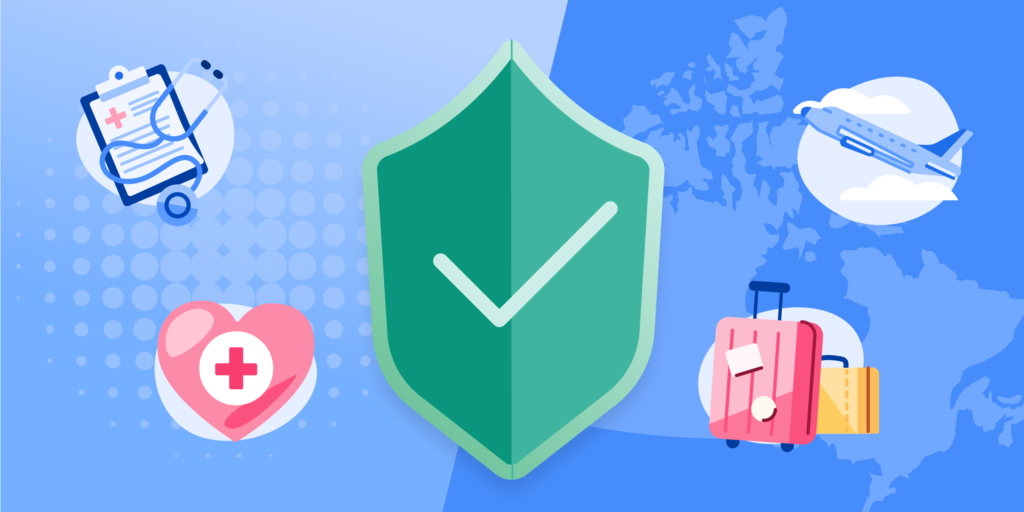Being an international student in Canada is a unique and rewarding experience. However, it’s important, before you start studying in Canada, to understand how the Canadian health care system works, and how you can access care.
It’s best to prepare yourself in the event you injure yourself and are in need of medical attention. The Canadian health care system is one of the country’s best features. As opposed to a national plan, Canada has specific provincial and territorial health plans. Here are a few things you should know about Canadian health care before your arrival.
Canadian Health Insurance
The cost of health services and medical treatments in Canada can be expensive. For instance, to visit a doctor or dentist could cost C$100+ depending on the reason.
Without any insurance coverage, you must pay out-of-pocket, meaning you won’t receive a reimbursement for the expense. With proper insurance, you’ll be reimbursed for the payment of basic health and medical services. However, you might still have to pay for part of the service.
Each Canadian province manages its own health care, and has health insurance plans for its permanent residents. Some international non-residents may be eligible for provincial health insurance plans, but note that the plans in some provinces, including the one in Ontario, don’t cover international non-residents.
In Ontario, international students must apply for private health care or UHIP, the University Health Insurance Plan. It’s best to contact the school you are applying to for more information about health insurance.
Looking for more details? Learn more about Canadian health and travel insurance.
Private Health Care vs Provincial Health Care
Canada encourages individuals to receive private health insurance in addition to provincial health insurance. This is because provincial health insurance may not cover the full cost of services such as prescription drugs, glasses and dental costs. Private health insurance ensures you are covered in most situations, and your expenses will be reimbursed.

Emergency Services
If you’re having a health emergency, dial 911 to connect to police, ambulance, or fire services. Before you’re in an emergency, it’s good to know what your insurance plan covers, like the cost of riding in an ambulance, or having a private hospital room.
All hospitals in Canada have an emergency entrance for individuals who need urgent medical attention.
Walk-In Clinics
If you need medical or health services that aren’t urgent, try visiting a campus health and medical services, or an independent walk-in clinic. Walk-in clinics are a great alternative for students who may not receive a health insurance plan through their host school and don’t have a physician.
Walk-in clinics employ experienced doctors who tend to minor injuries and illnesses. Appointments aren’t necessary, but to avoid a long wait, it’s best to arrive early. Services are provided on a first-come-first-serve basis.

UHIP
The University Health Insurance Plan (UHIP) is a mandatory health plan for all international students and workers at participating universities or affiliated colleges in Ontario. UHIP provides coverage for basic health and medical needs while you study or work in Ontario.
The plan’s cost is included in your tuition fees. If you have private health insurance, you may opt-out of UHIP.
OHIP vs UHIP
Provinces in Canada have their own health care systems. One example of a provincial health care system is Ontario’s OHIP (Ontario Health Insurance Plan.) There is a difference between province-specific insurance plans and UHIP. For instance, OHIP provides basic health coverage for permanent residents of Ontario and is entirely funded by provincial taxes. UHIP provides most coverage provided by OHIP, but for an audience of international students at Ontario post-secondary institutions, and is funded with member premiums.
UHIP Eligibility
To be eligible for UHIP you must be one of the following:
- An international student studying in Ontario
- An international employee working in Ontario
- A dependent of the international student
- A short-term visitor associated with a participating university
- A Canadian employee (or other) satisfying the OHIP waiting period
How to Apply for UHIP
Universities and colleges in Ontario automatically enroll international students in UHIP. However, international employees, short-term visitors, and dependents aren’t enrolled automatically. To learn how to apply manually, contact the UHIP Plan Administrator at your university.
For more information on Canada’s healthcare system, click here.
To learn more about Canada’s provincial healthcare, click here.
To find out more about UHIP, click here.
Ready to start your study abroad journey? Contact the team at ApplyBoard! We’re here to help.
Adrianna Dyczkowsky, Public Relations Specialist at ApplyBoard







